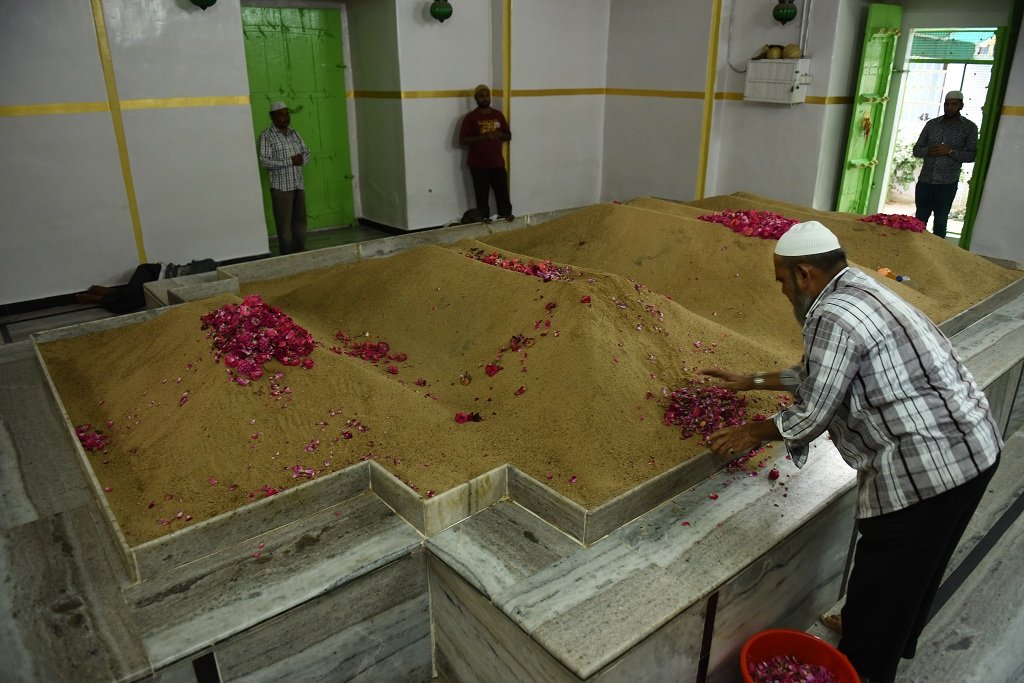Achampet , TELANGANA :
Exquisite detailing goes into Mohammed Osman’s renditions of Gangireddu cow and ox
Did you ever think a cow or bull could inspire an artist to such an extent, he would make it his favourite subject? “I used to see these beautifully-decorated cows and bulls being paraded during festivals in my hometown, Achchampet in Telengana and I fell in love with their form,” says artist Mohammed Osman at his ongoing exhibition at Gallery G. The visually stunning body of work “Dance with the Bulls” captures the bovine form in all their embellished glory.
Talking of his fascination for cows and bulls, Osman says, “It is a rare subject. When you see the grace with which Gangireddu animals are decked with clothes, beads, paint and bells, it is visually enriching,” says Osman, 47, who grew up in rural Achchampet, which is on the way from Hyderabad to Srisailam. “There have been times when I’ve gazed at these beautiful beasts for hours on end, when they would be part of pageants and their caretakers collected gifts for their upkeep,” he says.
Osman, after finishing a course in Fine Arts in Hyderabad in 2002, meticulously worked on his art pieces, all the while looking for the ‘right subject’ on which to pursue a full-fledged career. He zeroed in on Gangireddu or Basava (in Kannada) and the decorated bull now forms the crux of his artistic subject. “I attempt to capture the beauty of these lavishly-decorated animals in the best possible way. From 2006, I have created nearly 500 pieces and sold most of them,” says Osman, who regularly gets orders from connoisseurs.
Settling on a subject is a challenge for any artist, as according to Osman, “this is what makes an artist exclusive.” Specialisation is the key to any career, he adds. On whether he faced any difficulties on the choice of subject, Osman says, “When I started my work in 2006, I gathered reams of information from Indian mythology. I introduced Lord Krishna beside the cows as he is often depicted alongside cows and bulls. Radha Krishna and Gangireddu cows are frequently used in my canvas, as the form captures scenes from days of yore. I believe in Indian culture, in integrating myself and not in segregations such as Hindu or Muslim. I am happy that from the time I took up this work I have been flooded with orders. Khuda Ki Meharbani (god’s grace),” says Osman.
Having spent 20 years in rural landscapes outside Hyderabad, Osman’s palette is bright and brilliant, borrowing from the colourful garments and lifestyle of village folk there. His visual language is strong and his strokes are bold, using nearly 50 colours to capture a single Gangireddu. “I have done 100 variants of the subject; each one taking up to 20 days to finish given the minutiae of details I provide,” Osman explains.
The kind of ‘feats’ a Gangireddu can perform are stunning. “An ox can dance to the tune of its master’s nadaswara, it can nod at his command or shake its head to indicate no, kneel down and prostrate or bow when asked to. You can often see a Gangireddu stand on its master’s chest and bow in complete humility, appreciating a patron who has bestowed money or food on them. The ‘Dance with the Bulls’ series showcases the feats they perform,” says Osman.
(Dance With The Bulls – Gangireddu, solo by artist Mohammed Osman, is on till June 5 at Gallery G, Lavelle Road)
source: http://www.thehindu.com / The Hindu / Home> Society> History & Culture / by Ranjani Govind / May 30th, 2019










